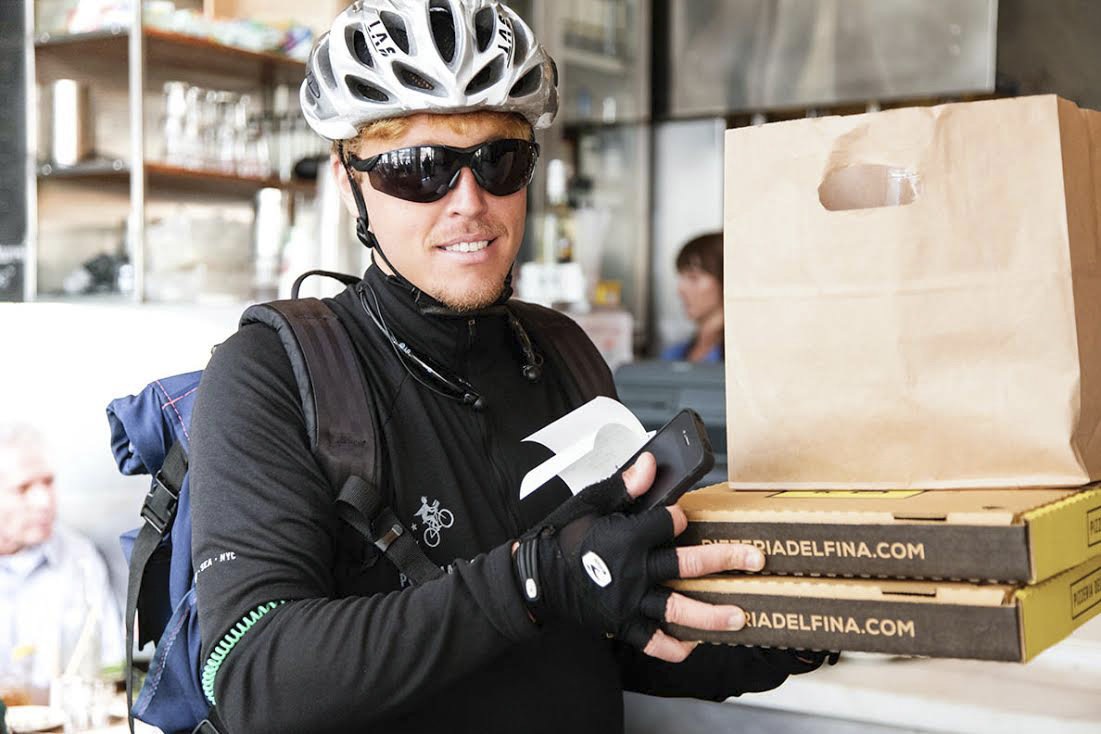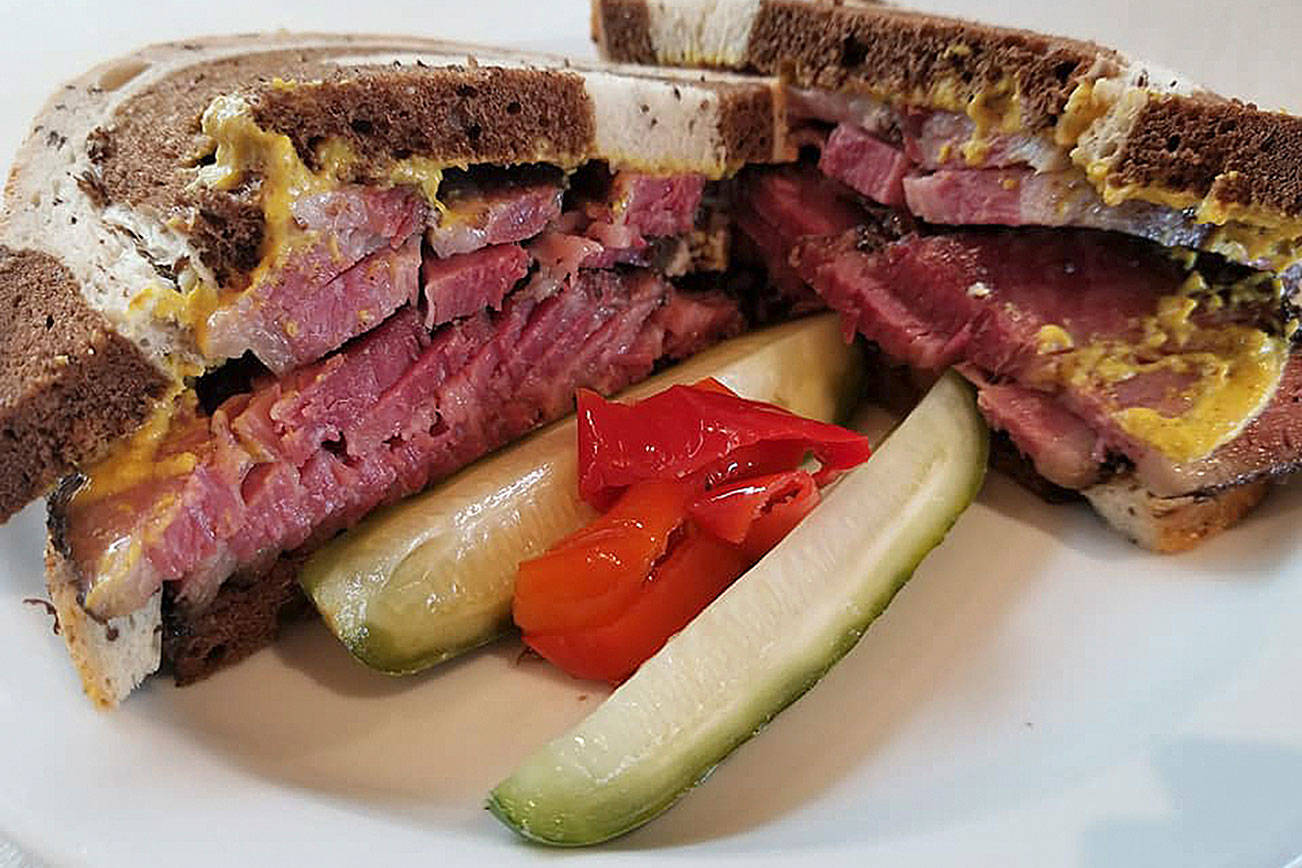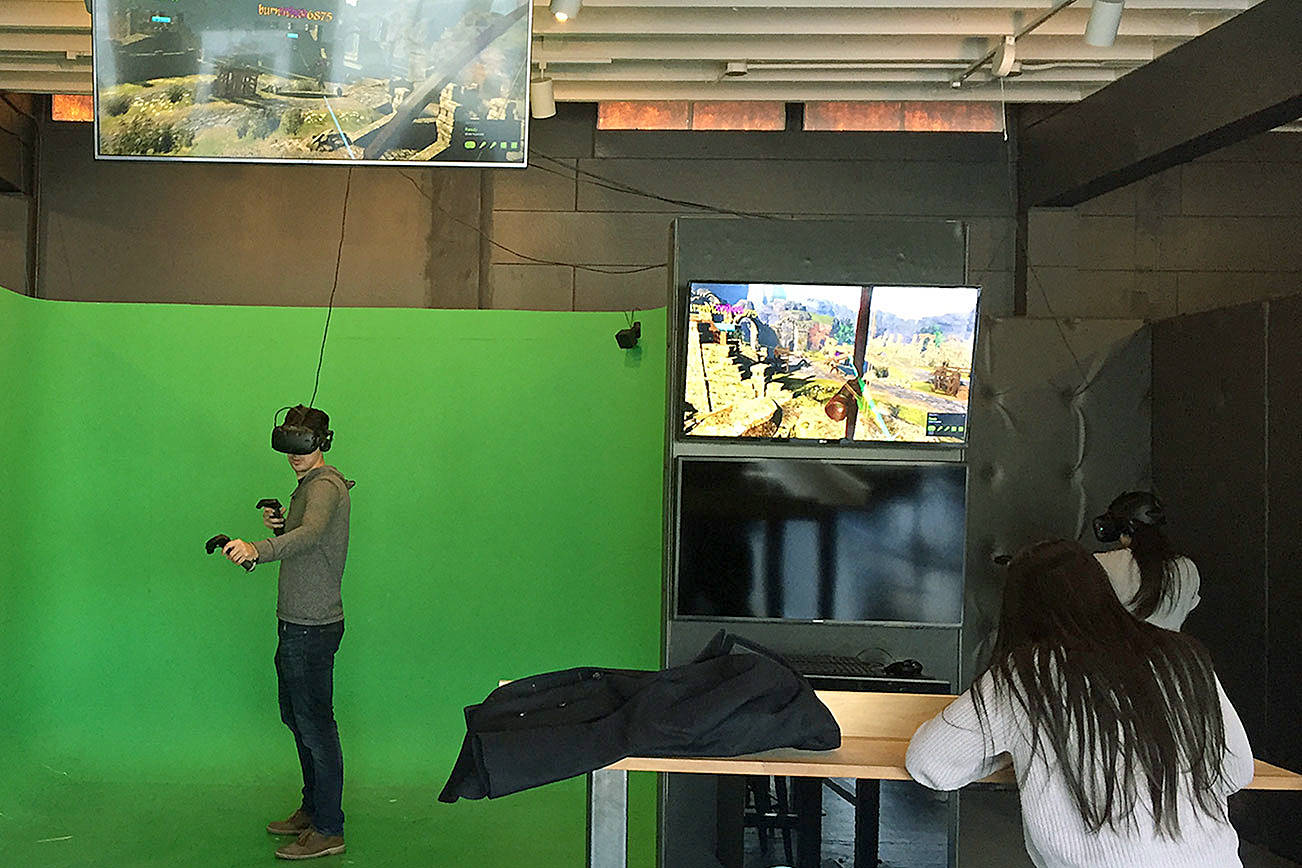There was a time when all you could order for delivery were pizza, Chinese food, and 12 CDs for the price of one, and we all managed just fine. Today, countless delivery startups offer a vast selection of meals to people who don’t want to leave their house to get them, including Lish, Munchery, Caviar, BiteSquad, and Postmates.
All are clearly geared toward the tech set, but they certainly also appeal to other busy and lazy people. Over one month I tried all of them, and got a little fatter because of it (that would have happened anyway). Here’s how it went down.
Caviar (trycaviar.com) pulls back the iron curtain between homebodies and premium restaurants previously unavailable for delivery, including Barrio, Mamnoon, Pike Place Chowder, and Bitterroot, among plenty of others. You can even order from Mighty-O Donuts. As such, the service feels exceedingly extravagant, like you’re one of those millionaires who has New York pizza flown to Los Angeles. (I saw that in a movie.)
Delivery, which takes 50 to 70 minutes, is free the first time you order and $4.99 after, added to a built-in 18 percent gratuity. You can’t expect a service called Caviar to be cheap. It becomes much more manageable, obviously, if you go in with other people.
When I ordered the lasagna from Cafe Lago (I’d heard good things), I was informed that my meal would be delivered by Olga, and that I could track her progress with a little icon on a map. I stared hungrily at the icon, refreshing the screen over and over like Jesse Eisenberg at the end of The Social Network. It was fun watching it move closer to me on the map. Caviar should put in some sort of audio accompaniment, like the yodeling music from the “Cliffhanger” game on The Price is Right.
The lasagna was ridiculously good, but that has nothing to do with Caviar. What matters is that it was still pretty warm when it arrived—but not as warm as it would have been in-house, of course. Like its namesake, Caviar has “special occasion” written all over it. I can see using it with drunken friends to order a mess of Tat’s cheesesteaks during the next Seahawks game.
Delivery startups can be divided into those that pick up food and those that make their own. Munchery(munchery.com) delivers meals made that day by a local team of experienced chefs, including Bo Maisano of 1200 Bistro and The Tin Table and Meg Grace Larcom, owner of The Redhead in New York. (Both live in Seattle.) Online, users can browse various meals, meant to be reheated, like chicken saltimbocca, chile-braised flank steak, and duck confit with kale.
Prices are generally $8–$10 with a $2.95 delivery charge, and can be ordered ahead in specific delivery windows by the cutoff time, generally 6 p.m. for same-day delivery.
I ordered ricotta-stuffed chicken with lemon spaghetti. This time the food was being delivered by Nikita, and I was informed that I’d get a text from her within 10 minutes of delivery. That’s pretty much what happened, except the delivery person was named Austin.
What you notice immediately is Munchery’s packaging. Resembling a bright argyle sock, it’s certainly a clever design, and one’s tempted to put it in the refrigerator and stare at it. Labels inform me that the tray is microwave and oven-safe, and tell me how long to reheat the food. The lemon-butter sauce, it says, should be poured over the pasta during the last minute of heating. Had any more effort been required, I would have just ordered pizza.
Reheating a cold meal that was delivered to you feels a bit like using the self-checkout at grocery stores. “Why am I doing this?” you wonder, before mindlessly accepting it. That aside, the ricotta-stuffed chicken was surprisingly tender and the lemon-butter spaghetti a nice pairing.
It was certainly good, better than the packaged meals at Whole Foods, yet not nearly as good as the ridiculously high-quality food photography on Munchery’s site. Munchery may feel a bit odd if you regularly cook, but otherwise it’s a reasonably priced and well-executed service. I will definitely contact them if I need to hire a food photographer.
I’m not trying to start a fight here, but Lish(lishfood.com) and Munchery will undoubtedly compete, as they offer similar services, the difference being that Lish recruits local chefs—like Chera Amlag of Food & Sh*t and Garrett Doherty of Kraken Congee—as independent contractors rather than using a permanent team, and is only in Seattle at the moment.
The site is easy to use, and again features magazine-quality food photography of various-sized dishes priced $12.99 and under and made that day, including pan-grilled lemongrass rockfish, venison chili, and Caribbean bean and collard empanadas with tahini kale. Delivery is $3.99, and the drivers, they say, do not accept tips.
I ordered the beef moussaka by chef Prakash Niroula. Even though I scheduled the meal for the next day, I still found myself looking out the window like an idiot for the delivery guy. The meal arrived when it was supposed to, and came with a free cookie and a little piece of dark chocolate. (Munchery’s also came with a free cookie, but no chocolate; get your shit together, Munchery.)
It didn’t look as good as the photo, but was hearty and delicious nonetheless, and I can see ordering it again if I ever become one of those organized people who plan meals in advance.
To be honest, I’m losing track of which services do what at this point but, as I recall, BiteSquad(bitesquad.com) appears to pick up food primarily from restaurants that don’t otherwise deliver. You may have noticed their fleet of green and white Priuses on the road, and, as I did, got the impression that that’s what they use to make the deliveries. But there are only nine of those Priuses in Seattle—they’re more of a branding tool, like the Oscar Mayer Wienermobile, and most deliveries are made with the drivers’ personal cars.
BiteSquad provides access to about 200 restaurants in Seattle (Caviar does around 50), and tracks your delivery on a map underneath a futuristic-looking progress bar that shows where your order’s at. As long as you’re within seven miles of them, they’ll probably go there, the delivery fee rising according to distance: “Just like a taxi,” the website tells us. Delivery fees generally range from $3.99 to $7.99.
I tried Mary’s Kitchen in South Lake Union, because I was curious to see if the fried chicken would survive the trip in all its crispiness. Surprisingly, it did.
Though the design of the website’s restaurant list looks a bit like it came from the movie WarGames, and though the delivery fees and occasional minimum-order amounts are a tad off-putting, BiteSquad works pretty efficiently. It’s hard to say how many of these startups will survive long-term, but BiteSquad has as good a chance as any.
Since Postmates (postmates.com) currently functions only as an app on iPhones and Androids and not on my clearly uncool Windows phone, I used a friend’s phone. It was like that episode of Seinfeld in which Elaine had to cross the street to order the Supreme Flounder. Postmates will soon be adding Internet ordering.
The app has an interesting setup, listing various restaurants and stores to order from—from Dick’s to Safeway to Ezell’s to Whole Foods. If an item isn’t listed, you can make a custom order for an unlisted item and add any specific instructions, like requesting a burger medium-rare or asking for bananas to be extra-green.
You can pretty much order anything, but, as a spokesperson told me, “Postmates cannot deliver cash, prepaid cards, gift cards, or monetary collectibles (stamps, coins, and precious metals).” Darn.
Postmates works a bit like Uber, finding nearby available drivers, except they deliver food instead of people. The delivery fee generally depends on distance, so if you live on Capitol Hill, and want a burger from Skillet, you should definitely order from the Skillet on Union and not the one in Ballard. It’s the difference between $5 and $10.
My burger and poutine—still decently warm—were delivered within the hour by Dakota, who apparently had 736 deliveries under his belt (my God) with a perfect five-star rating. The food arrived in a bag with a label that said “Your day just got awesome,” which I thought was a little presumptuous on their part, as if the awesomeness of my day was dependent on ordering food. It was, but that’s beside the point.
With a somewhat insane level of flexibility, Postmates can be as endless as your imagination (sorry), and it’ll be interesting to see where the company goes. At the moment, though, my imagination is telling me to get off my ass, go to the grocery store, and actually cook something.
food@seattleweekly.com








